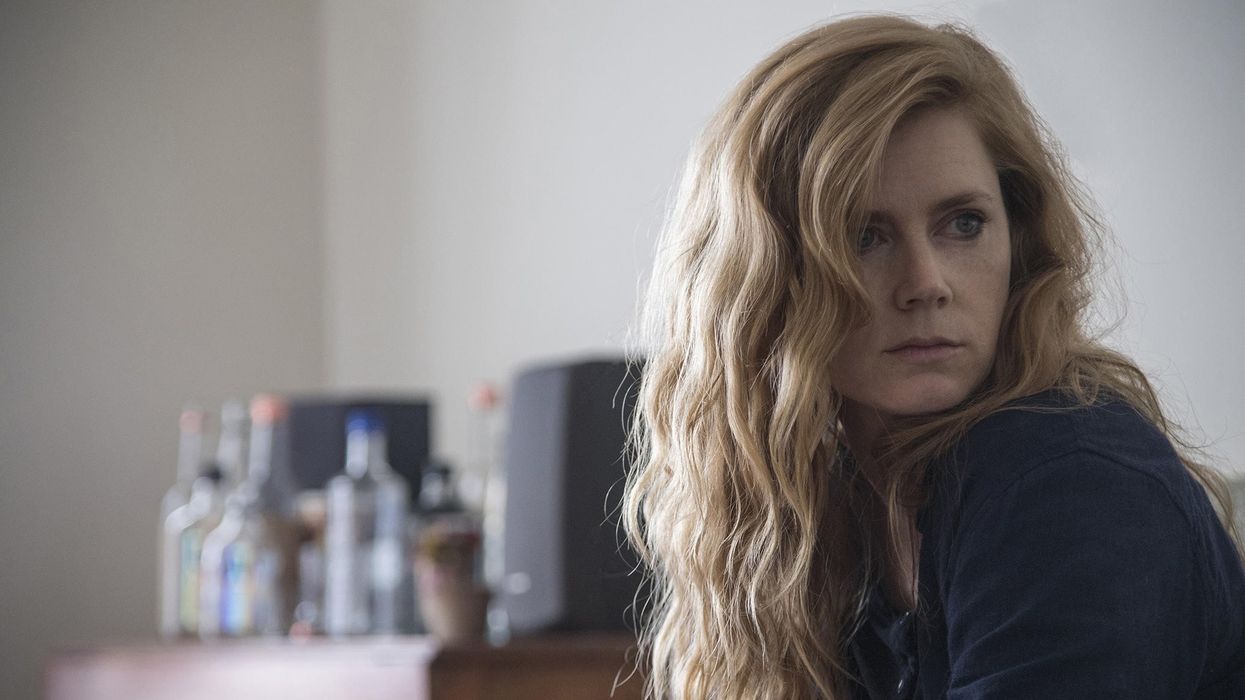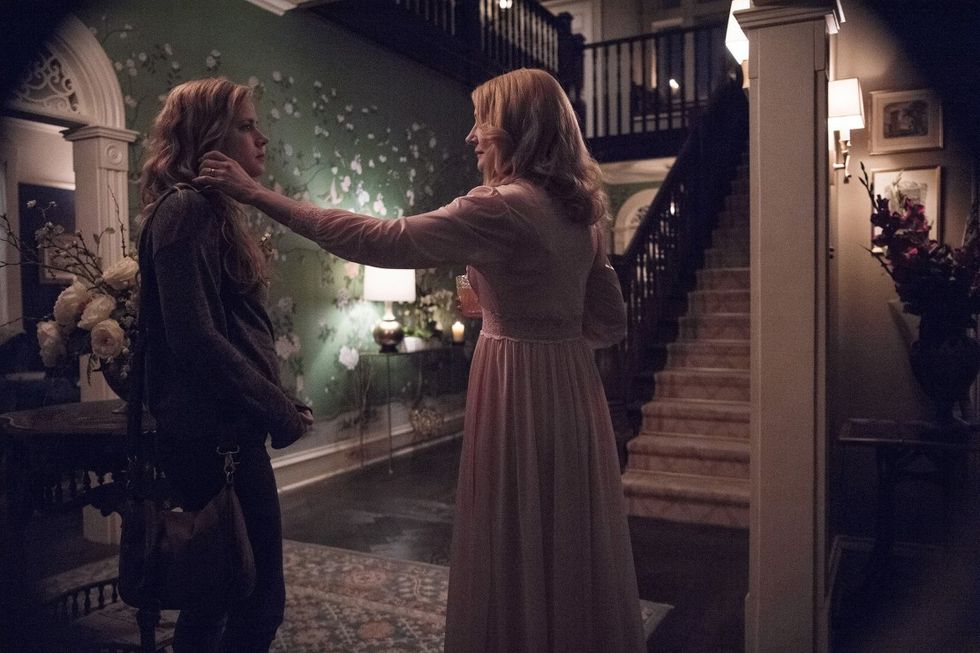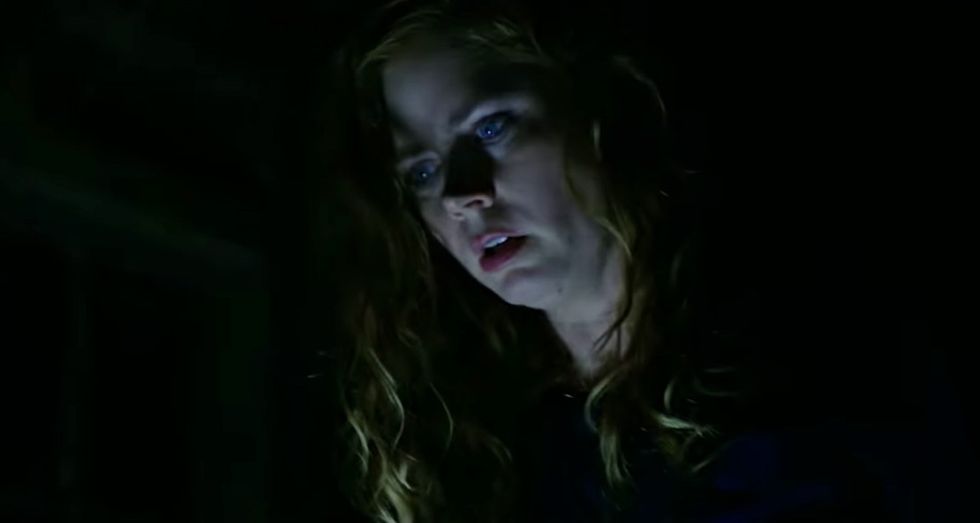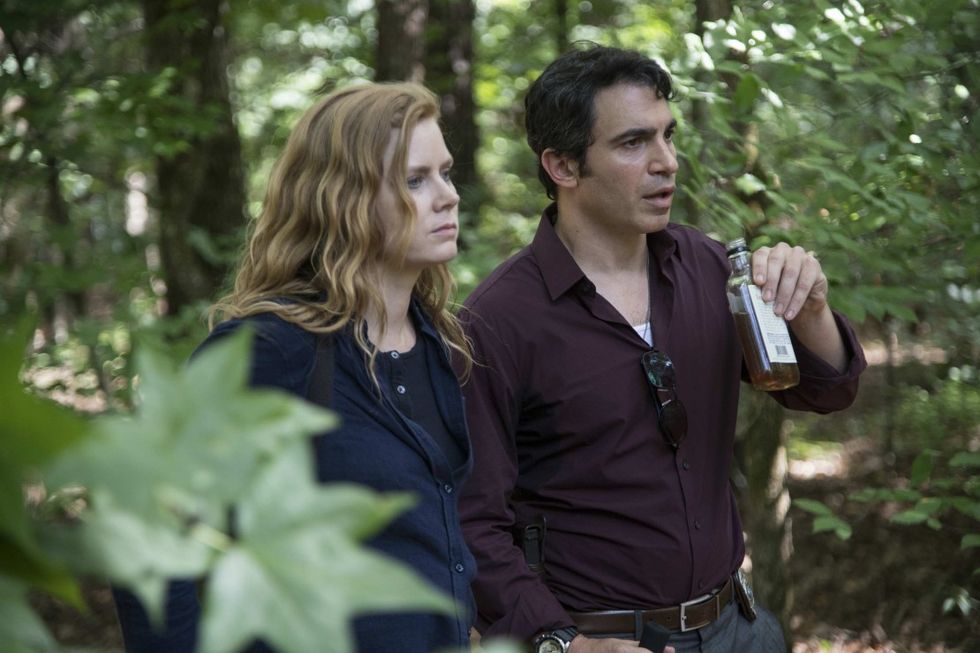'Sharp Objects': DP Yves Bélanger on Letting Available Light and the Subject Shape Your Cinematography
For DP Yves Bélanger of the HBO miniseries 'Sharp Objects', following the moment is central, even in a narrative.

Sharp Objects, the new HBO miniseries adapted from Gillian Flynn's novel and directed by Jean-Marc Vallée, could best be seen, at first, as a collection of highly nuanced parts. Some of these parts represent characters with complex backstories and even more complex exteriors. Some of these parts are mini-narratives that draw interest and then intensify. As the series develops, all of these parts draw closer and closer to each other until they join, forming a mural that is both otherworldly and distinctly familiar.
"We don’t add any extra light. So, the subject, the location, creates a different visual effect, because we respect it."
The story is a fairly simple one: Camille Preaker, a reporter in Chicago, is sent back to her hometown to investigate a missing persons case for a human interest story—which would be tricky enough by itself, but given Camille's history, which reveals itself slowly, the journey is in many ways an excruciating challenge. Amy Adams gives a highly sensitive and complicated performance here, bringing Camille's pains and strengths to equal light. She stays with her dangerously complex mother, played staggeringly by Patrica Clarkson, while she's in town; the family mansion becomes closer to a haunted house as the story develops.
The visual world of the film is of crucial importance; you see it less than you swim in it, immersed, possibly trapped. In advance of the series premiere, No Film School spoke with the DP, Yves Bélanger—whose credits include Dallas Buyers Club, Brooklyn, and the recent HBO series Big Little Lies—about creating that world.
No Film School: The kind of community you shot in Big Little Lies was a very different place than the community shot here. Both were complex, but there were large economic and cultural differences between Monterey and a small Missouri town. Did that affect the way this series was shot?
Yves Bélanger: The subject of the story always affects the cinematography, for sure, but also, Jean-Marc always tries to shoot in real locations. We don’t add any extra light. So, the subject, the location, creates a different visual effect, because we respect it. We don’t intervene or change it. What happened here and on Big Little Lies too is that for budget reasons some of the sets were made in a studio. Jean-Marc let me come up with a plan where I was in the studio, but we treated it like a real location, so I could only light from the window or the front portico.
Both these films had sets, but with different people in different locations. I had three and a half weeks of shooting in the South, so during that time, we had only the light of that particular state, at that particular time of year.
"For this show, we did the same technique we always do—dolly, handheld, no crane unless there's a very precise reason."
NFS: What kind of preparation was there for this project?
Bélanger: Well, generally, five or six weeks before, I get the script, I read it, I take notes. After that, you see the location with the art director, and you say for example after you put some white fabric in a window, Can you build another window here, maybe? After that, you do some tests. When the sets were being built, I would go once a week and say things like This is good but can you just change this one little thing so I can light it or This backdrop is too close to the window, can you try to have a little greater distance from the window?
NFS: Were there other films you kept in mind as you were working?
Bélanger: I like to do that sometimes, but Jean-Marc is not like that. He doesn't watch TV; he does watch movies, but he hasn't gone to theaters much in the last 5 or 6 years because he's always working. So we don't have a reference like that. It's more like we've known each other for so long, since 1991, so with us, it's very much about the logic of the moment and the situation. Is it interesting? Is it true? That's it.
Bélanger: This project was a little special. All the other projects Jean-Marc has worked on, in both film and HBO, he has free reign, or carte blanche, so he always does a rewrite of everything, to add little things here and there. It's subtle, but he always works with the screenwriters. With Big Little Lies there was only one screenwriter, David Kelley, so it was very easy to communicate; Jean-Marc just sent it to him, and usually David was very happy.
But this show was kind of already there, with a showrunner (Marti Noxon). Gillian Flynn and [Noxon] were always on set, but they were very nice. Everyone knows when you work with Jean-Marc, you just let him do his thing, you just get on the train and go. When Jean-Marc rewrote parts of the script, Gillian and [Noxon] were very receptive. They would never say don't do this or don't do that. For my part, I only relate to what Jean-Marc is telling me about the rewriting of the script. Jean-Marc knows exactly what he wants, and so it's very easy to work with him.
For this show, we did the same technique we always do—dolly, handheld, no crane unless there's a very precise reason. For example, in Big Little Lies, when they were running on the beach, it would have been very silly to use a handheld, so we used a dolly. For this show, Jean-Marc told me that not only did he want me to light everything like I always do, but he wanted me to underexpose everything. The concept was fairly instinctive--we did it after the second day or third day.
For Patricia Clarkson’s character, we decided she would always be between two lights. If there were two windows, she would be between the two windows. She would never have a key light. That first time you see her, at night, when she opens the door, there's no light behind her. At night, when she's on the balcony, there's light but it's kind of dim. There was a little bit of a practical reason, too; I didn't want to be disrupted by the fact that her character had to look good, always. There were some scenes where I couldn't do it. In the big scene with the big party outside, it was impossible to put her in the right spot, so she wore a big hat. But everything was from the point of view of Amy. Amy could go anywhere, as far as the light was concerned.
"It's what I call 'the Jaws effect': the less you show, the more the imagination of the audience does the rest."
NFS: Could you say a little more about the difference, for you, between shooting women and men?
Bélanger: It may be a flaw of mine, but I always take more care of the women than the men. I don't know if it's an old habit from the studio system. We don't really put makeup on guys. Of course, it depends on the project. With Jean-Marc, it's a lot of women, so . . . I may need them to look older or not as beautiful as they are in real life, and it's tough, with HD. I just find that the less I do, the better they look, and it used to be quite the contrary. In the studio system, they would put tons of lights and nets and diffusion to make the actor look good, but then she couldn’t move.
NFS: How did you treat the scenes from the past as opposed to the scenes from the present?
Bélanger: I don't give any special treatment to flashbacks. Sometimes I choose a special color, cold or warm, but Jean-Marc plays a lot with the editing of the scenes, so I let him have control. I never know what the order of the scenes will be.
NFS: Camille's body, and her sense of her own physical presence, dominates the story. How did that affect the way you shot her character?
Bélanger: It's really fairly instinctive. I tried to react to each scene in a different way—I look at the actors and the follow the idea of the situation and the location, and usually it works, and if it doesn't work then Jean-Marc changes the order and makes it work. When you play, too, with real light, in movies, sometimes that shuffles the continuity a little. If the sun moves, or there's a change in the clouds, Jean-Marc is very aware of that, so I know that he's going to use that for his editing. He's going to use the light. If a car passes at night and it lights my face in a scene in a bar, he's going to use it.
I always go for the situation itself, trying to make it interesting. I always think of this quote from Kubrick: “it’s real but it isn't interesting.” So I always try to make it real, but also interesting. So sometimes I would say, "yeah it's real but let's put the light behind you so we don't see your face almost", or "it's real but let's move the light so we see one of your eyes." It's like playing hockey—you practice a lot, but when you're playing the game, you just react.
NFS: How did you handle the violent scenes in the series? Violence is there, but it’s not present in a very aggressive way.
Bélanger: I like Jean-Marc’s approach. It's what I call "the Jaws effect": the less you show, the more the imagination of the audience does the rest. A lot of times people imagine that they saw a thing, but it's not there. Even in life, when policemen look for clues, they don't look at the dead body too much. They look elsewhere, at smaller things.
NFS: Well, relatedly, there are a lot of close-ups here and in the other series you’ve done—how did you feel those worked here?
Bélanger: I think it has a lot to do with the way the human brain works. When a character first thinks about something in a film, it's a wide shot, but when you get an idea in a flash, it's always a close-up. With Jean-Marc, the point of view of the main character comes first, and then from that point, it's the way the human memory works. The brain is so complex—so the close-ups aren’t about showing off, they’re about the way people think and feel.













![Ethos, Pathos, Logos: 20 Effective Ways to Advertise [Infographic]](https://nofilmschool.com/media-library/ethos-pathos-logos-20-effective-ways-to-advertise-infographic.jpg?id=34064614&width=600&height=600&quality=90&coordinates=560%2C0%2C0%2C0)

